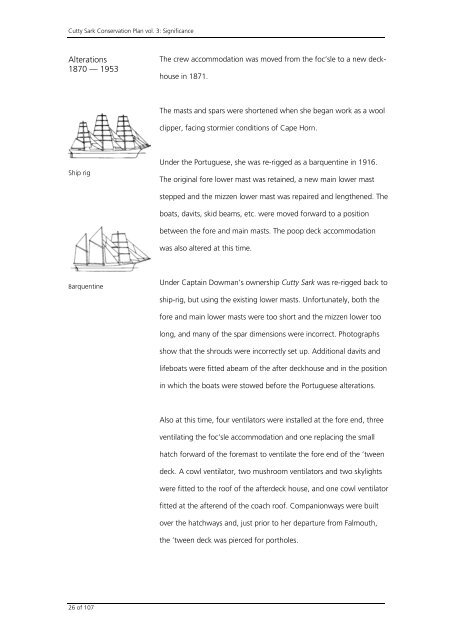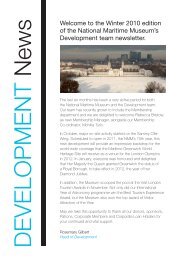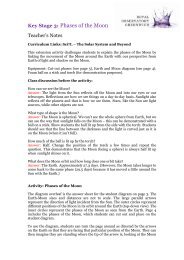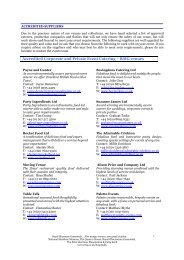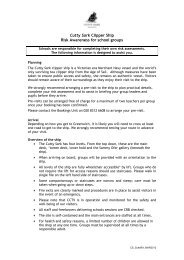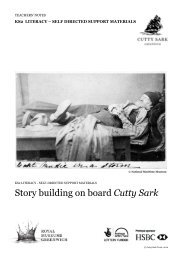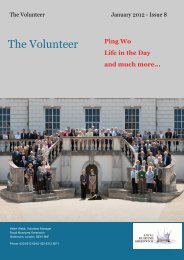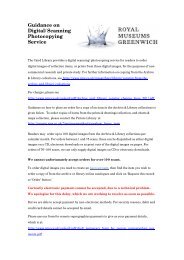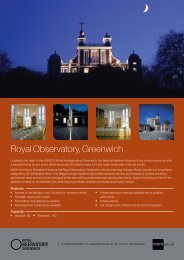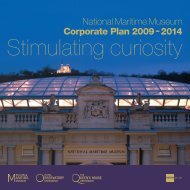Conservation Plan 3 Significance.pdf - National Maritime Museum
Conservation Plan 3 Significance.pdf - National Maritime Museum
Conservation Plan 3 Significance.pdf - National Maritime Museum
You also want an ePaper? Increase the reach of your titles
YUMPU automatically turns print PDFs into web optimized ePapers that Google loves.
Cutty Sark <strong>Conservation</strong> <strong>Plan</strong> vol. 3: <strong>Significance</strong><br />
Alterations<br />
1870 — 1953<br />
Ship rig<br />
Barquentine<br />
26 of 107<br />
The crew accommodation was moved from the foc’sle to a new deck-<br />
house in 1871.<br />
The masts and spars were shortened when she began work as a wool<br />
clipper, facing stormier conditions of Cape Horn.<br />
Under the Portuguese, she was re-rigged as a barquentine in 1916.<br />
The original fore lower mast was retained, a new main lower mast<br />
stepped and the mizzen lower mast was repaired and lengthened. The<br />
boats, davits, skid beams, etc. were moved forward to a position<br />
between the fore and main masts. The poop deck accommodation<br />
was also altered at this time.<br />
Under Captain Dowman’s ownership Cutty Sark was re-rigged back to<br />
ship-rig, but using the existing lower masts. Unfortunately, both the<br />
fore and main lower masts were too short and the mizzen lower too<br />
long, and many of the spar dimensions were incorrect. Photographs<br />
show that the shrouds were incorrectly set up. Additional davits and<br />
lifeboats were fitted abeam of the after deckhouse and in the position<br />
in which the boats were stowed before the Portuguese alterations.<br />
Also at this time, four ventilators were installed at the fore end, three<br />
ventilating the foc’sle accommodation and one replacing the small<br />
hatch forward of the foremast to ventilate the fore end of the ’tween<br />
deck. A cowl ventilator, two mushroom ventilators and two skylights<br />
were fitted to the roof of the afterdeck house, and one cowl ventilator<br />
fitted at the afterend of the coach roof. Companionways were built<br />
over the hatchways and, just prior to her departure from Falmouth,<br />
the ’tween deck was pierced for portholes.


